Cisco Linksys Network Extender Kit PLWK400 User Guide | Installation
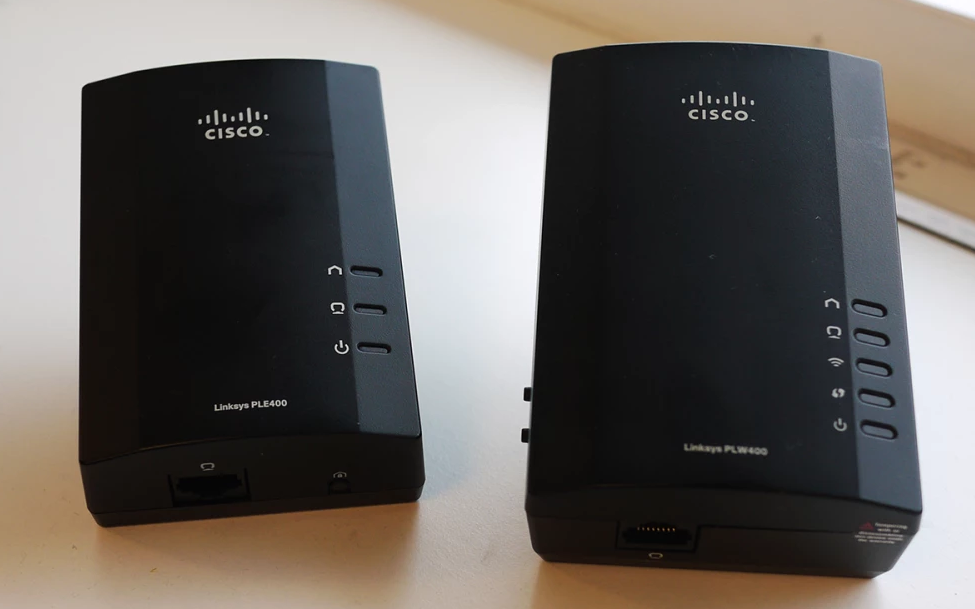
Content

Cisco Linksys Network Extender Kit PLWK400
The Cisco Linksys Network Extender Kit PLWK400 is a powerful device designed to extend your Wi-Fi network coverage and eliminate dead zones. With an estimated price range of $100-$150 and a launching date of January 2021, this network extender is a must-have for anyone looking to enhance their home or office Wi-Fi network.
Detailed Specifications
The Linksys Network Extender Kit PLWK400 boasts the following key features
- Dual-band technology for improved performance and reduced interference
- Data transfer rates of up to 300 Mbps on the 2.4 GHz band and 867 Mbps on the 5 GHz band
- Advanced security features, including WPA2 encryption and SPI firewall
- Simple setup and management through a web-based interface
- Compact and unobtrusive design for easy placement
Model: PLW400
| Specification | Details |
|---|---|
| Standards | HomePlug AV, IEEE 802.11b/g/n, 802.3, 802.3u |
| Ports | Fast Ethernet (10/100) |
| Buttons | Wi-Fi Protected Setup, Easy Connect, Reset |
| LEDs | Powerline, Ethernet, Wireless, Wi-Fi Protected Setup, Power |
| Security Features | 128-Bit AES Link Encryption, WPA2, WPA, WEP |
| Modulation schemes | 1024/256/64/16/8 QAM, QPSK, BPSK, ROBO |
| Network client support | Up to 8 Powerline client devices, up to 32 wireless client devices |
| Utility OS requirements | Windows 7/Vista/XP, Mac OS X v10.5 or higher |
| Default SSID | “CiscoXXXXX” where XXXXX is the last 5 digits of the adapter’s serial number |
Environmental
| Specification | Details |
|---|---|
| Dimensions | 113 x 73 x 33 mm (4.45 x 2.87 x 1.3 inches) |
| Weight | 158 g (5.6 oz.) |
| Power | 100-240V AC, 50-60 Hz |
| Certifications | FCC, IC, CE, WiFi, HomePlug AV |
| Operating Temp. | 0 to 40°C (32°F to 104°F) |
| Storage Temp. | -20 to 70°C (-4°F to 158°F) |
| Operating Humidity | 10 to 85% Non-condensing |
| Storage Humidity | 5 to 90% Non-condensing |
Model: PLE400
| Specification | Details |
|---|---|
| Standards | HomePlug AV, 802.3, 802.3u |
| Ports | Fast Ethernet (10/100) |
| Buttons | Easy Connect, Reset |
| LEDs | Powerline, Ethernet, Power |
| Security Features | 128-Bit AES Link Encryption |
| Security Key Bits | 128 |
| Modulation schemes | 1024/256/64/16/8 QAM, QPSK, BPSK, ROBO |
Environmental
| Specification | Details |
|---|---|
| Dimensions | 101.9 x 71.9 x 52.4 mm (4.0 x 2.83 x 2.06 inches) |
| Weight | 116 g (4.1 oz.) |
| Power | 100-240V AC, 50-60 Hz |
| Certification | FCC, IC, CE, HomePlug AV |
| Operating Temp. | 0 to 40°C (32°F to 104°F) |
| Storage Temp. | -20 to 70°C (-4°F to 158°F) |
| Operating Humidity | 10 to 85% Non-condensing |
| Storage Humidity | 5 to 90% Non-condensing |
Overview
Thank you for choosing this Linksys Powerline network adapter kit. These adapters provide easy setup and let you connect wired and wireless network devices to your home network. You need at least two Powerline adapters to create a Powerline network. This kit includes:
- One PLE400 single-port Powerline adapter
- One PLW400 wireless single-port Powerline adapter
Features
PLE400
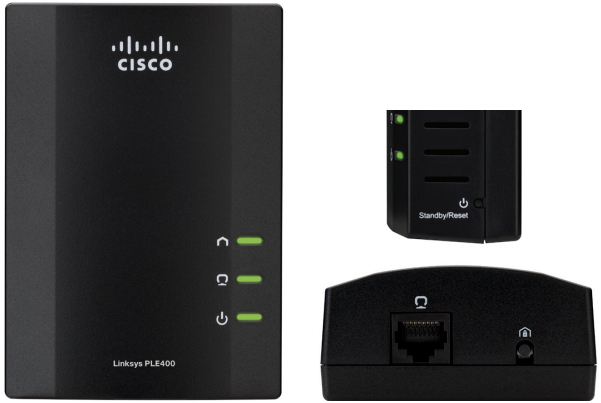
- Powerline: The Powerline LED turns on when the adapter is connected to the Powerline network. The LED flashes to indicate network activity.
- Ethernet: The Ethernet LED turns on when a wired network device is turned on and connected to the adapter’s Ethernet (network) port. The LED flashes to indicate network activity.
- Power: The power LED turns on when the adapter is powered on.
- Ethernet: This connects to computers or other wired network devices. In a basic home Powerline network setup, you would connect this to one of your router’s available Ethernet ports.
- HomePlug Simple Connect Button: Configures advanced security (the network password) for your Powerline network.
- Standby/Reset: To restore the factory default settings (including the advanced security settings and the network password), use a pointed object to press and hold the Standby/Reset button for at least ten seconds.
PLW400
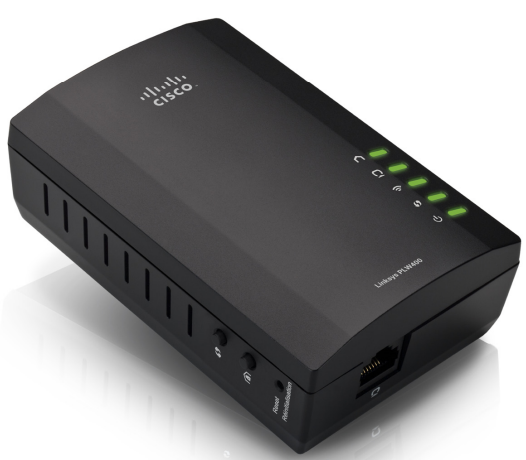
- Wi-Fi Protected Setup button: Press this button to connect with other wireless network devices that have a Wi-Fi Protected Setup button.
- HomePlug Simple Connect button: Configures advanced security (the network password) for your Powerline network.
- Reset button (recessed): To restore the factory default settings (including the advanced security settings and the network password), use a pointed object to press and hold the Reset button for at least ten seconds.
- Powerline LED: The Powerline LED turns on when the adapter is connected to the Powerline network. The LED flashes to indicate network activity.
- Ethernet LED: The Ethernet LED turns on when a wired network device is turned on and connected to the adapter’s Ethernet (network) port. The LED flashes to indicate network activity.
- Wireless LED: The Wireless LED turns on when a wireless network device is connected to your PLW400.
- Wi-Fi Protected Setup LED: This LED flashes while a wireless network device is connecting with your PLW400 using Wi-Fi Protected Setup.
- Power LED: The power LED turns on when the adapter is connected to a powered electrical outlet.
- Ethernet port: Use a network (Ethernet) cable to connect this port to a wired network device.
Detailed Description
The Cisco Linksys Network Extender Kit is a powerful and easy-to-use solution for extending your Wi-Fi network coverage. With dual-band technology, this network extender provides improved performance and reduced interference, ensuring a fast and reliable connection in every corner of your home or office. The device is easy to set up and manage, with a web-based interface that allows you to customize your settings and monitor your network. Plus, with advanced security features like WPA2 encryption and SPI firewall, you can rest assured that your network is safe and secure.
How Powerline Networking Works
Electrical wiring runs through your home or office, carrying power to electrical outlets in every room. The typical wired Ethernet network uses Ethernet network cables to connect your wired network devices. A Powerline network uses your existing household wiring as the wiring for your Powerline network. To create your Powerline network, use two or more Powerline adapters. Each device on your Powerline network requires a connection (either wired or wireless) to a Powerline adapter.
- The PLE400 has one Ethernet port. One of these devices is typically used in a Powerline network to connect your network’s wireless router to the household wiring.
- The PLW400 contains one Ethernet port and an access point. You can connect one wired device and several wireless devices to it.
When adding a Powerline network to an existing network, the connections between the Internet, modem, and router stay the same.
Example installation
This diagram shows a basic Powerline network in a house. The router upstairs is connected to the PLE400, which is plugged into an electrical outlet. Downstairs, a gaming console and a computer are connected to the PLW400, which is plugged into an electrical outlet.
Using the household wiring of the home, the router expands the local network to include the gaming console and desktop computer in the living room. Internet access, files, and printers can be shared between the computers and other networked devices. For online gaming, you can play downstairs in the comfort of your living room, while using the high-speed Internet connection of the router and modem upstairs.

Installing the Adapters
Installation overview
To set up your Powerline network, you should
- Make sure you already have Internet access and a working home network.
- Share Internet access with your Powerline network.
- Install Powerline adapters near the network devices that you want to connect to your home network.
- Make sure that the wireless devices that you want to connect to the PLW400 have a working wireless feature. An easy way to test this is to first try to connect the wireless network device to your home’s wireless router while near the router.
Tips
- If possible, connect Powerline adapters directly to a wall power outlet, and not to an extension cord, power strip, or surge protector.
- If a Powerline adapter must be installed onto a power strip, make sure that no other electronic devices are connected to the same power strip.
- If possible, position the PLW400 near the wireless devices that you want to connect.
- Avoid obstructions (such as metal file cabinets, mirrors, and thick walls) between the PLW400 and any wireless device you want to connect.
How to share Internet access
To share Internet access over the Powerline network, connect your router to the Powerline network (typically with a single-port Powerline adapter such as the PLE400).
To connect your wireless router to your Powerline network
- Connect your PLE400 (or another single-port Powerline adapter) to a power outlet near your wireless router. The adapter’s power LED turns on.
- Use the included Ethernet network cable to the port on the adapter and to an available port on the back of the wireless router. The adapter’s Ethernet LED turns on. You are now ready to extend your Powerline network to the rest of your home.
NOTE: For advanced security setup, see “Setting up advanced security” on page 8.
How to connect your PLE400
You can use your PLE400 to provide Internet access to the rest of your Powerline network (see “How to share Internet access” above). Or, if you used a different Powerline adapter to share Internet access, you can install your PLE400 elsewhere in your home.
TIP: You can also set up and configure all of your Linksys Powerline devices using the configuration utility. For more information, see “Using the Utility” on page 8.
To add a PLE400 to your Powerline network
- Connect the adapter to a power outlet near the network device you want to connect. The adapter’s power LED turns on. The Powerline LED flashes, and continues flashing until it connects to a second Powerline adapter.
- Connect the network device’s network cable to an available port on the Powerline adapter. The adapter’s Ethernet LED flashes, then stays on when the connection is finished.
How to connect your PLW400
After your existing network’s router is connected to a Powerline adapter, you can install your PLW400 elsewhere in your home.
TIP: You can also set up and configure all of your Linksys Powerline devices using the configuration utility. For more information, see “Using the Utility” on page 8.
To connect your PLW400
Make sure that the power switch on the right side is set to I (on).
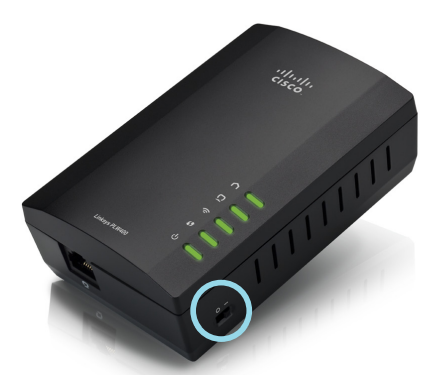
- If your home network already has security set up (recommended)
- Connect the PLW400 to a power outlet near your main wireless router.
- On the PLW400, press and hold the Wi-Fi Protected Setup button
 for at least one second, until the the Wi-Fi Protected Setup LED flashes.
for at least one second, until the the Wi-Fi Protected Setup LED flashes. - Within two minutes, press the Wi-Fi Protected Setup button
 on your wireless router. The PLW400 retrieves the security settings from the router and connects to your wireless network.
on your wireless router. The PLW400 retrieves the security settings from the router and connects to your wireless network.
- Move your PLW400 to a power outlet near the wireless network device(s)
you want to connect. Typically, this area is not covered well by your home’s wireless network router. The Powerline LED flashes, and then stays on when the connection to the rest of the Powerline network is finished. Your home’s wireless network is now available in the area surrounding the PLW400.
flashes, and then stays on when the connection to the rest of the Powerline network is finished. Your home’s wireless network is now available in the area surrounding the PLW400. - Connect the wireless network device to the wireless network in the usual manner. For instructions, see your wireless network device’s user documentation. The PLW400’s Wireless LED
 flashes, and then stays on when a wireless network device successfully connects.
flashes, and then stays on when a wireless network device successfully connects.
Setting up advanced security
NOTE: The devices connected to the Powerline adapters will temporarily lose Internet connection during the security setup.
To configure your network adapter with advanced security
- On one of the existing Powerline adapters that already has advanced security set up, press and hold the HomePlug Simple Connect button
 for at least one second, until the Powerline LED
for at least one second, until the Powerline LED begins flashing slowly.
begins flashing slowly. - On your PLW400, press and hold the HomePlug Simple Connect button
 for at least one second, until the Powerline LED
for at least one second, until the Powerline LED  begins flashing slowly. When the LED stops flashing, the network key has been shared with the PLW400.
begins flashing slowly. When the LED stops flashing, the network key has been shared with the PLW400.
NOTE: The devices connected to the adapters will regain Internet access within five minutes.
Using the Utility
If you’re having difficulty connecting the adapters using Wi-Fi Protected Setup, or if you’d like to set more advanced options, you can use the configuration utility.
To install the configuration utility
- Connect a computer’s Ethernet port to the PLW400’s Ethernet port using the provided cable.
- Insert the setup CD into the computer’s CD or DVD drive, then follow the on-screen instructions.
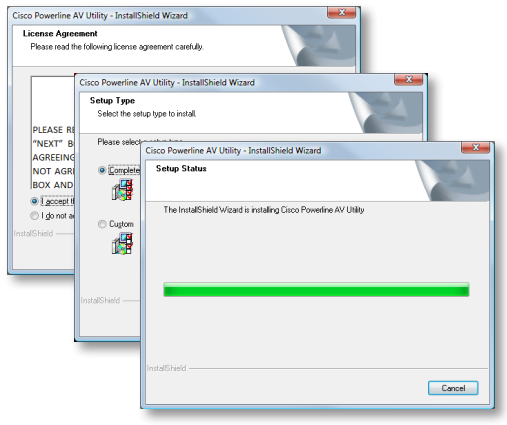
To use the configuration utility
- After the utility is installed:
On Windows systems
Click Start, All Programs, Cisco Systems, then Cisco Powerline AV Utility. The utility opens.
On Mac OS X systems
Open the Applications folder, then double-click the Cisco Powerline AV Utility icon. The utility opens.
NOTE: If you try to change the settings of a Powerline device from a computer that is not connected directly to that device with a cable, you are prompted for a password. The device password is printed on the back of the device. Click the Network Status tab to view details of the Powerline adapters that are connected to your network.
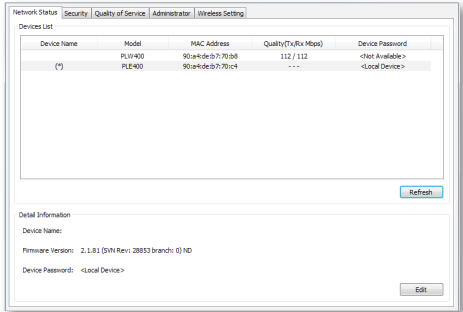
- If a connected adapter is not listed here, click Refresh.
- To change information for any adapter that’s listed, select the adapter, then click Edit.
Click the Security tab to manually change the network key for each device. If you need to revert to the default key, click Restore Default Key.
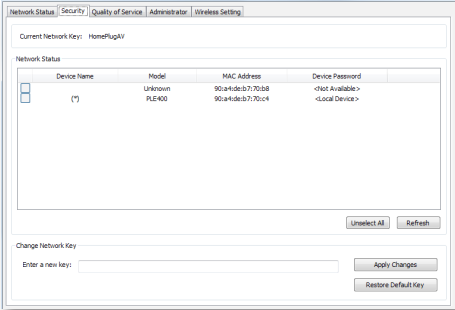
Click the Quality of Service tab to specify how the network prioritizes network bandwidth.
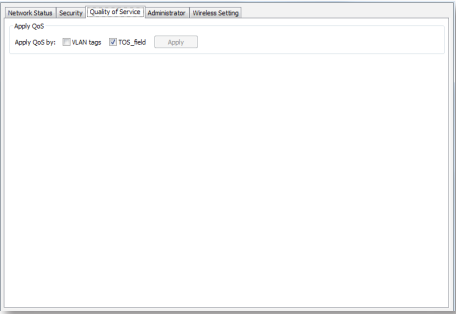
Click the Administrator tab to restart an adapter, restore factory defaults, or upgrade the adapter’s firmware.

Click the Wireless Settings tab to change the wireless network name (SSID), wireless security type, or passphrase/key.
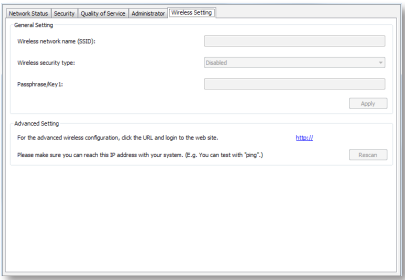
Settings are applied to the adapter(s) immediately. Close the window to exit the utility.
Troubleshooting of Cisco Linksys Network Extender Kit
Here are some common problems and solutions for the Cisco Linksys Network Extender Kit PLWK400:
Your wireless network device is not recognized by your network.
Try the following
- Make sure that the wireless device is turned on and that its wireless networking is turned on.
- If possible, position the PLW400 near the wireless device that you want to connect.
- Avoid obstructions (such as metal file cabinets, mirrors, and thick walls) between the PLW400 and any wireless device you want to connect.
If you have set up advanced security for the Powerline network, check the following: - Make sure all adapters on the Powerline network have been configured with the same network password. The network password must be identical in order for them to communicate with each other. See “Setting up advanced security” on page 8“ or “Using the Utility” on page 8.
The Ethernet LED does not turn on after you connect a wired Ethernet device to the Powerline adapter.
Follow these instructions
- Make sure that the Ethernet network cable is securely connected to the adapter.
- Make sure that the Ethernet network cable is securely connected to the network device you are connecting.
Or
- Disconnect the adapter from the power outlet.
- Disconnect the Ethernet network cable from the adapter.
- Wait five seconds.
- Re-connect the Ethernet network cable to the adapter.
- Re-connect the adapter to the power outlet.
- If this solution does not work, make sure that the electrical outlet is working properly. Plug a different device into the outlet, and try to turn it on.
You cannot connect to other computers on your local network or to the Internet.
If you did not set up advanced security for the Powerline network, follow these instructions
- Locate the Powerline adapter connected to the computer that cannot connect.
- On the left side of the adapter, use a pointed object to press and hold the Standby/Reset button for at least ten seconds. This resets the adapter to its factory default settings.
If you have set up advanced security for the Powerline network, check the following:- Make sure all adapters on the Powerline network have been configured with the same network password. The network password must be identical in order for them to communicate with each other. See “Setting up advanced security” on page 8“ or “Using the Utility” on page 8.
- If you are adding a new adapter to a pre-existing Powerline network with a unique network password, follow the instructions in “Using the Utility” on page 8.
The LEDs are flashing and I don’t know what it means.
Refer to the following table of LED behavior to help diagnose the problem
| LED Indicator | Status | Meaning |
|---|---|---|
| Powerline LED | Off | Not connected to Powerline network |
| Flashing fast | Send/Receive data | |
| Flashing slow | Pairing | |
| Solid | Connected to Powerline network | |
| Ethernet LED | Off | Not connected to Ethernet network |
| Flashing | Send/Receive data | |
| Solid | Connected to Ethernet network | |
| Wireless LED (PLW400 only) | Off | Wireless not connected |
| Solid | Wireless enabled | |
| Flashing | Send/Receive data | |
| Wi-Fi Protected Setup | Flashing slow | Connection in progress (up to two minutes) |
| (PLW400 only) | Flashing fast | Connection error. |
| Solid | Connection successful | |
| Power LED | Off | Device power off |
| Solid | Device power on and ready | |
| Flashing fast momentarily | Factory default (both models), device wakeup from standby mode (PLE400 only) | |
| Flashing fast indefinitely | Pairing error/system error | |
| Flashing slow | Device in standby mode (PLE400 only) |
Pros & Cons
Pros
- Easy to set up and manage
- Improved performance and reduced interference
- Advanced security features
- Compact and unobtrusive design
Cons
- May not be powerful enough for very large homes or offices
- May be more expensive than other network extender options
Customer Reviews of Cisco Linksys Network Extender Kit PLWK400
- "I've been using the Cisco Linksys Network Extender Kit PLWK400 for a few months now and I'm very impressed with its performance. The device is easy to set up and manage, and it has significantly improved my home Wi-Fi coverage. I would highly recommend this network extender to anyone looking to boost their Wi-Fi signal." - John D.
- "I bought the Cisco Linksys Network Extender Kit PLWK400 to extend the Wi-Fi coverage in my office and I'm very happy with my purchase. The device is easy to use and has improved the reliability and speed of my network. I would definitely recommend this network extender to any small business owner" - Sarah K.
- The most common complaint among customers is that the network extender may not be powerful enough for very large homes or offices. However, most customers are very happy with the performance and reliability of the device.
Faqs
How do I configure my network extender kit, a Cisco Linksys PLWK400?
Can I utilise a multi-story structure with the Cisco Linksys PLWK400?
How can I solve my PLWK400 kit's connectivity problems?
Can I expand my network with more than one PLW400 extender?
When utilising the PLWK400, are there any safety measures I should take?
If my PLWK400 kit isn't displaying a network connection, what should I do?
Is gaming and streaming possible with the Linksys PLWK400 Network Extender Kit?
In what ways can I safeguard my Cisco PLWK400 network from unwanted intrusions?
How many devices is the Linksys PLWK400 Extender compatible with?
Which warranty is included with the Cisco Linksys PLWK400?
Leave a Comment
